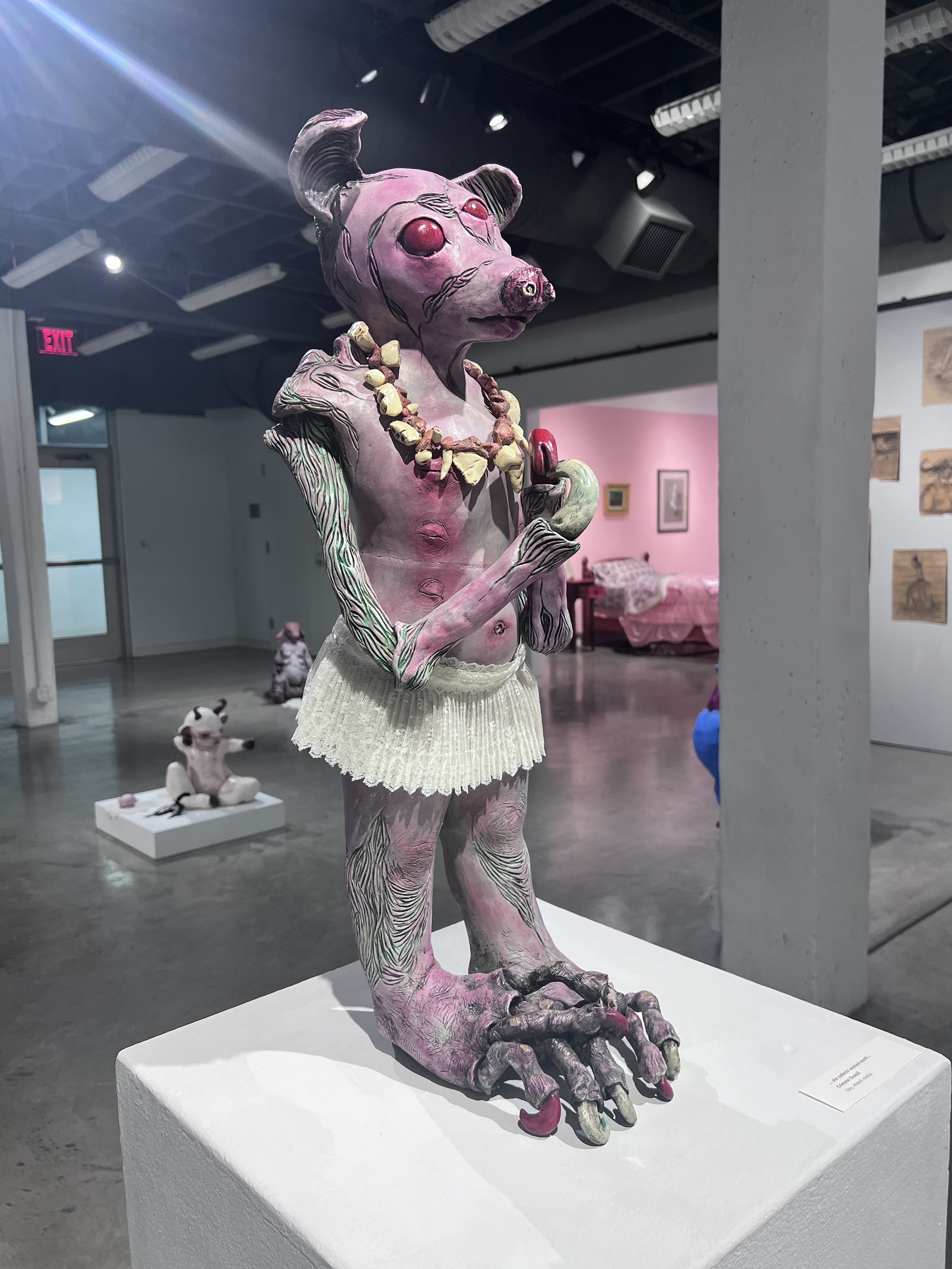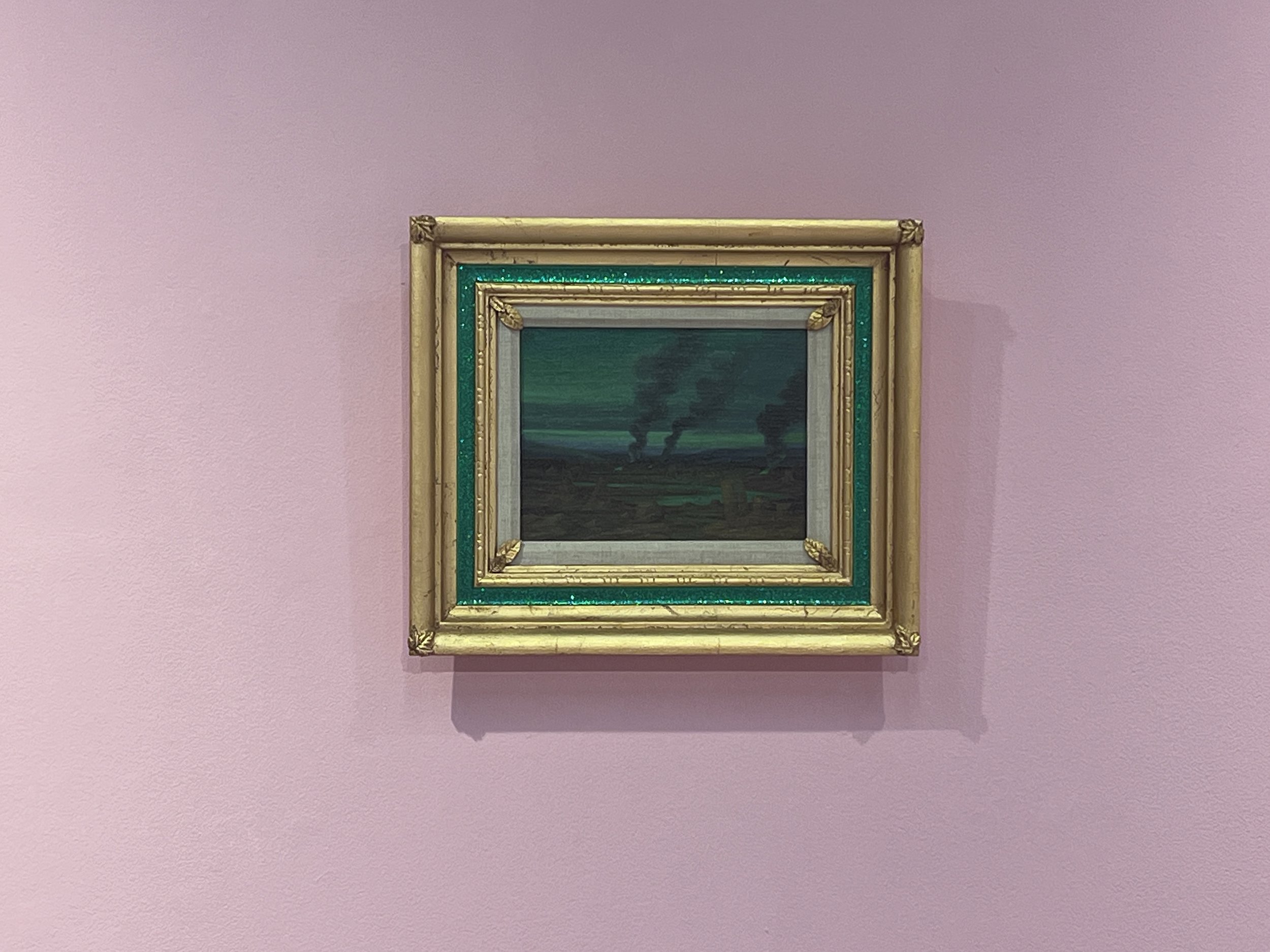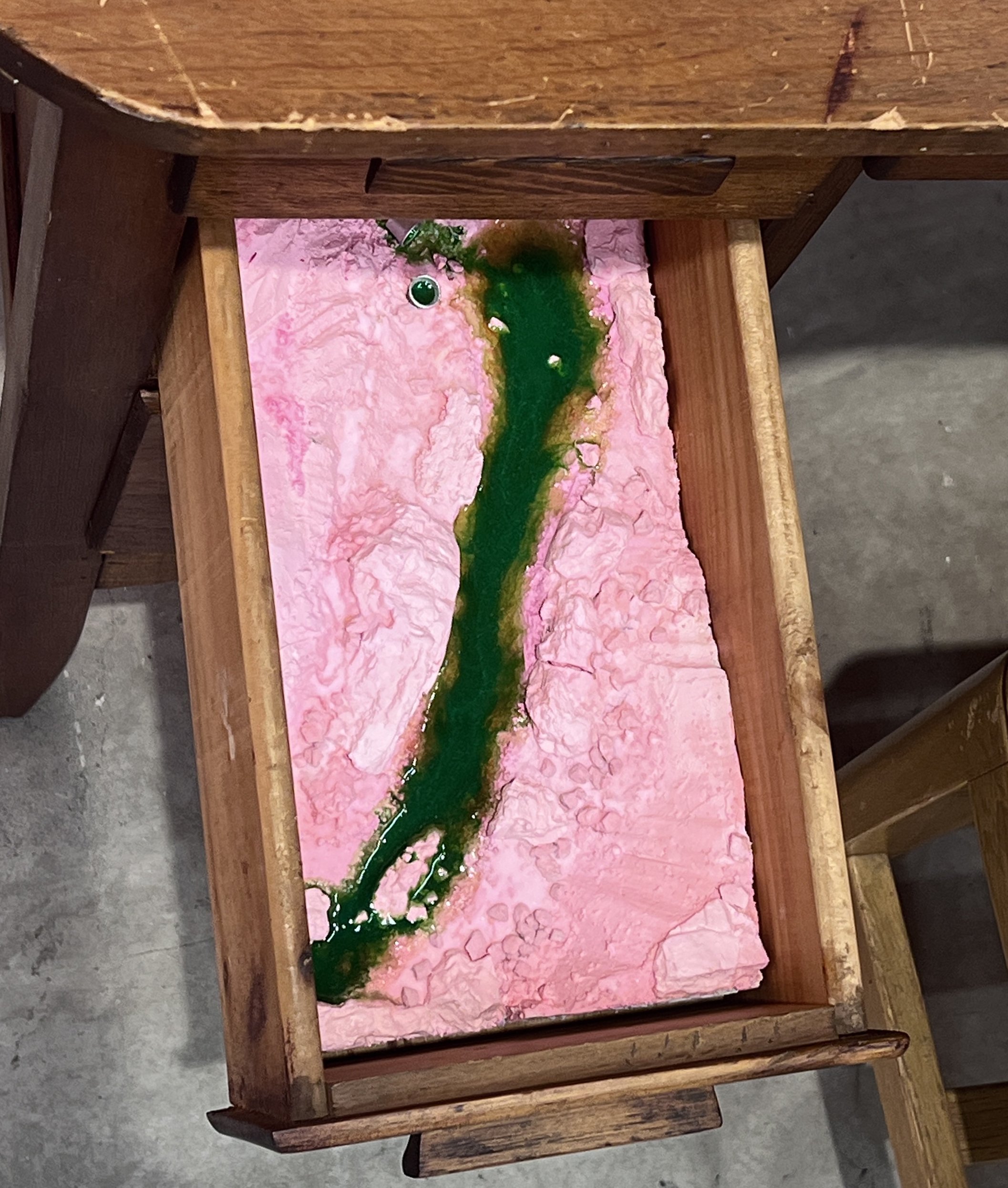Disordered Creatures
From Surrealist artists utilizing “exquisite corpses” to address the unconscious effects of post-war trauma to present-day artists who use “disordered companions” to grapple with mental health, artists have long created external imaginary characters to embody their emotional and psychological struggles. The artists in this exhibition craft metaphorical narratives with Disordered Creatures that become empathic vessels for materializing anxieties, fears, and traumas. Each artist tackles imposing topics through the viewpoint of creatures. Their work invites the viewer to adopt the creatures’ perspective, to empathize with their struggles.
Crimson Duvall’s fantastical sculptures are born from personal struggles faced throughout her life. Through her forms and materials, there’s a playful, yet unsettling, aesthetic. They are fleshy and humanlike, but grotesque and disfigured, ultimately not quite human and not quite animal. Despite their distinct otherworldliness, the vulnerability in the works elicit feelings of empathy. The fragility of her ceramic sculptures mirrors the precarity of the human mind and mental health.
The installation GirlzRoom by Laurie Hogin represents the bedroom of a young gender-queer girl navigating a toxic environment. Decorated in pink, this room acts as both a metaphor and exposition for what is the real lived experience regarding toxic environments, nature, and the cultural vs biological definitions of gender. Hogin’s installation allows the viewer to step into the identity of someone that doesn’t quite fit their surroundings. She invites them to question how they are reacting and why they are reacting as they are.
Kelli Scott Kelley’s creatures are hybrid anthropomorphic figures representing characters in a story on linens. The domestic, often handwoven linens juxtapose the dark imagery that occurs in her narratives. In Floating Cottage, the central plot revolves around the opioid crisis in the United States and its effects on Kelley’s family with the larger question asking why people find unhealthy ways to cope, such as drugs, to find an escape from their lives? In her Migrations series, Kelley’s drawings reflect on climate change. Her works focus on the fragility of our time, allows viewers a place of repose, and invites them to contemplate our world.
The artists in this show use feminist methods of care and mythmaking to address the psyche and create pathways for viewers to do the same. Their creatures are toxic yet tactile, acidic yet inviting, disturbing yet endearing. With intense color palettes and material sensitivity, their works resonate with complex emotional states. In Disordered Creatures, psychological states are brought into being in order to externalize, examine, and engage mysterious regions of the mind.
Katherine Gemperline, curator
Links to Artists;
Crimson Duvall - https://crimsonduvall.com/home.html
Laurie Hogin - https://lauriehogin.com/
Kelli Scott Kelley - http://kelliscottkelley.com/



































































